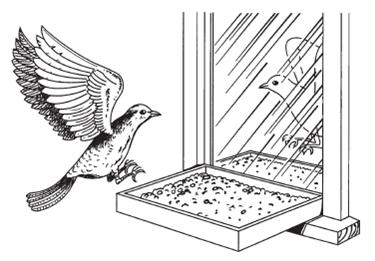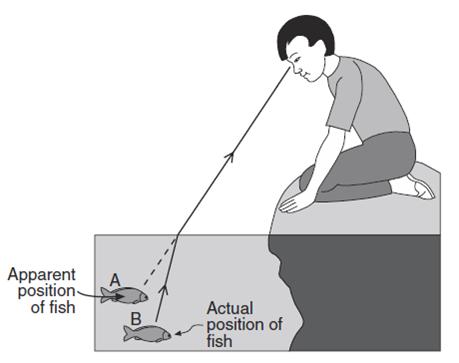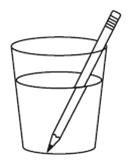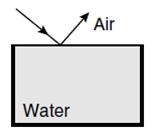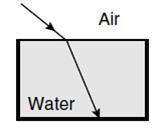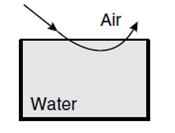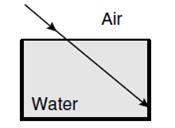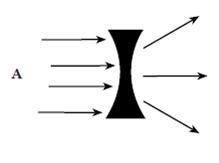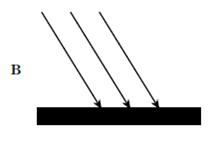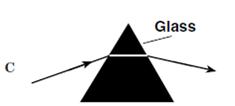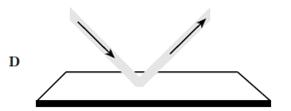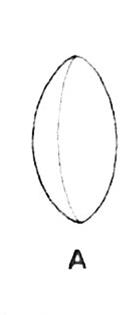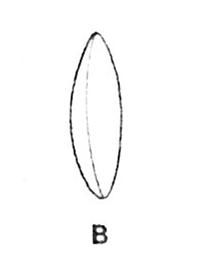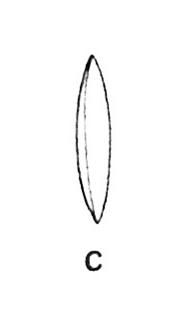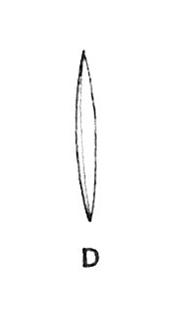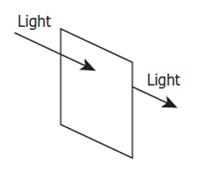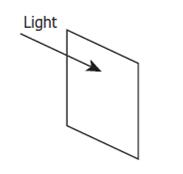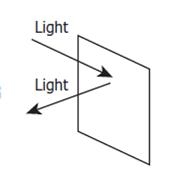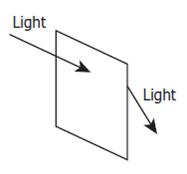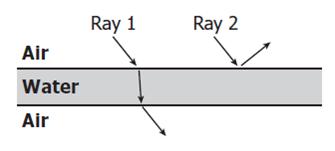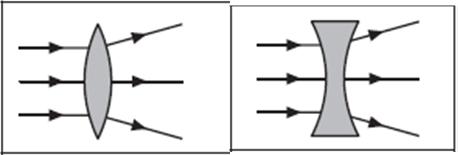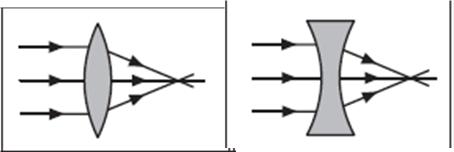| . 1 pt(s). |
A ray of light is reflected from a mirror. Which diagram shows the path of this ray of light before and after reflection? | ||
| A. |
|
||
| B. |
|
||
| C. |
|
||
| D. |
|
||
| E. |
|
||
| . 1 pt(s). |
The diagram below shows a boy observing a fish located at position B below the surface of the water. The boy sees the fish at position A. The apparent position of the fish is different from the actual position of the fish. What has happened to the light passing through the water to cause this difference?
|
||
| A. | refraction | ||
| B. | compression | ||
| C. | reflection | ||
| D. | absorption | ||
| . 1 pt(s). |
The diagram below shows a pencil in a glass of water. When viewed from the side, the pencil appears to be broken. What process causes this to happen?
|
||
| A. | absorption | ||
| B. | evaporation | ||
| C. | reflection | ||
| D. | refraction | ||
| . 1 pt(s). |
Which diagram shows the refraction of light as it enters water from the air? | ||
| A. |
|
||
| B. |
|
||
| C. |
|
||
| D. |
|
||
| . 1 pt(s). |
On a sunny morning, students standing in front of a shop window noticed an image of themselves in the glass. Why did the students see their image in the glass? | |
| A. | Some of the light was reflected off the surface of the glass. | |
| B. | Some of the light passed through the glass window. | |
| C. | Some of the light was absorbed by the glass surface. | |
| D. | Some of the light separated into different colors. | |
| . 1 pt(s). |
Which diagram best shows the reflection of light? | ||
| A. |
|
||
| B. |
|
||
| C. |
|
||
| D. |
|
||
| . 1 pt(s). |
The eye has a lens inside it to focus the light onto the retina. As with all lenses, the lens in the eye bends the light to bring it a focus. The lens can change shape to cope with light from different distances away. Look st he diagrams below and decide which would bend the light the greatest. | ||
| A. |
|
||
| B. |
|
||
| C. |
|
||
| D. |
|
||
| . 1 pt(s). |
A lens is used to focus light. It can do this because it | |
| A. | stretches the light | |
| B. | squeezes the light | |
| C. | bends the light | |
| D. | splits the light | |
| . 1 pt(s). |
Which of these correctly shows how light acts when it hits a mirror? | ||
| A. |
|
||
| B. |
|
||
| C. |
|
||
| D. |
|
||
| . 1 pt(s). |
Two torches are turned on. The light rays they create are shown in the diagram. These light rays best illustrate that —
|
||
| A. | both rays are reflected | ||
| B. | both rays are refracted | ||
| C. | Ray 1 is reflected and Ray 2 is refracted | ||
| D. | Ray 1 is refracted and Ray 2 is reflected | ||
| . 1 pt(s). |
Which of the following would reflect rather than refract light? | |
| A. | Magnifying glass | |
| B. | Mirror | |
| C. | Prism | |
| D. | Lens | |
| . 1 pt(s). |
Objects appear different in size and shape in a container of water due to | |
| A. | reflection of the light waves | |
| B. | them swelling up with the water | |
| C. | the water evaporating | |
| D. | refraction of the light waves. | |
| . 1 pt(s). |
Lenses are used in glasses to correct a persons eyesight. The lenses differ depending on whether a person has difficulty seeing objects close up or seeing distant objects. In the following the two types of lens are shown, which option correctly illustrates how the lenses bend the light? | ||
| A. |
|
||
| B. |
|
||
| C. |
|
||
| D. |
|
||
| E. |
|
||
| . 1 pt(s). |
What happens to three rays of light when they pass through a concave lens? | |
| A. | they come to a point | |
| B. | they bounce off | |
| C. | they split into different colours | |
| D. | they spread apart | |






